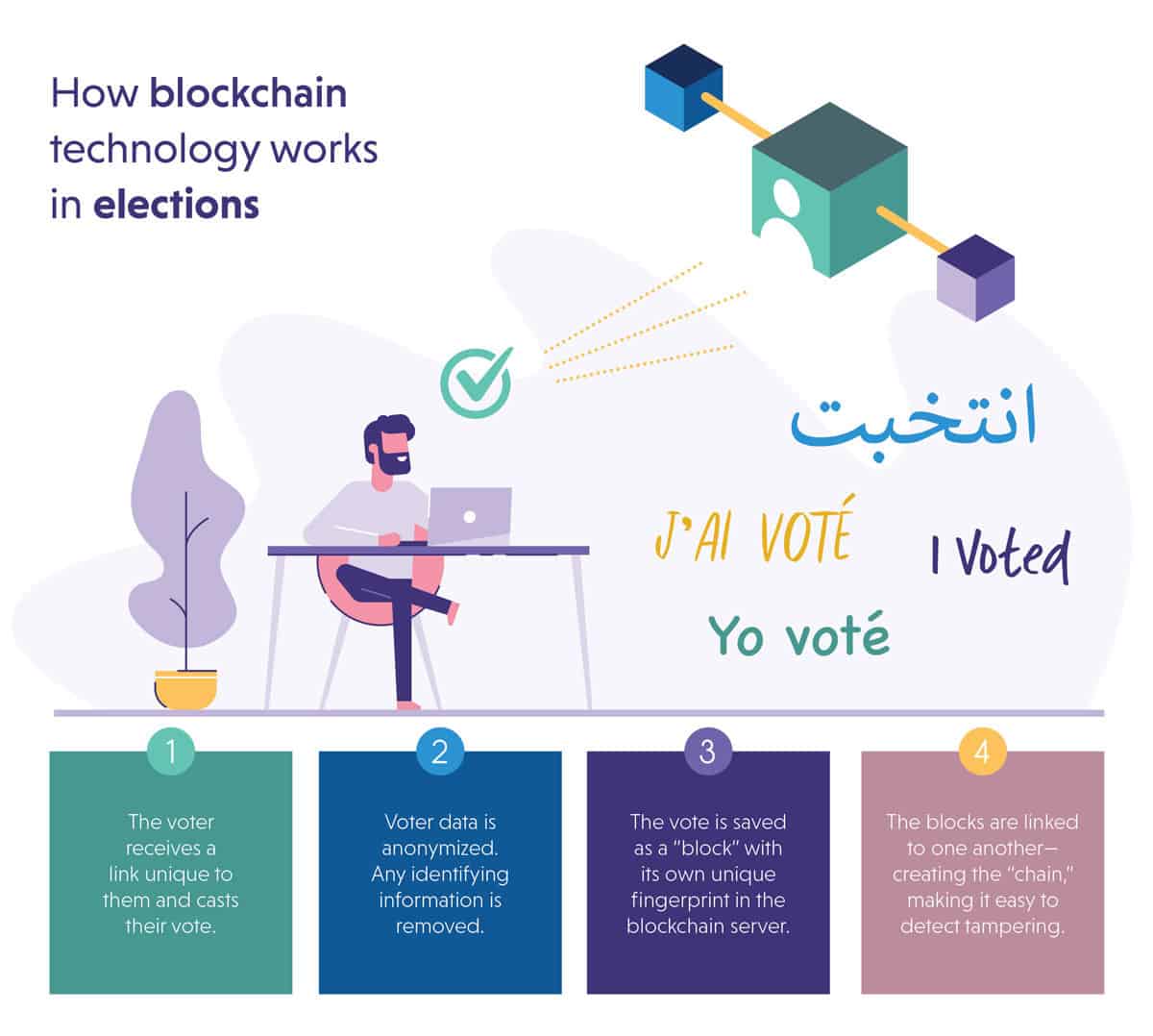Por Ashley Williams
From Somalia to St. Lúcia, 400 staff members around the globe recently cast their ballots in Creatives’ first blockchain election, an important first step toward utilizing blockchain technology in real elections.
“Blockchain has reignited interest in online voting and the promise it holds in solving electoral issues as technology evolves to get closer to the reality of secure digital elections," diz Ayan Kishore, Diretor do Laboratório de Desenvolvimento Criativo.
“Such tests help us better understand what it takes to implement and learn by doing,”ele diz.
If successful, this technology could be used to create online options for voters when going to the polls is unsafe, or to include a diaspora or refugee electorate or accommodate other election needs.
Creative partnered with Netvote, an online voting platform that uses blockchain technology, to run the internal vote. Each staff member was emailed a unique link to vote and had 72 hours to cast their ballot. Individual data was then made anonymous and saved to Netvote’s blockchain ledger.
“This internal vote was comparable in scale to smaller elections — such as overseas or diaspora votes — commonly organized in the complex environments where Creative has supported elections," diz Tihana Bartulac Blanc, Creative’s Senior Program Director for the Área de Educação Eleitoral e Prática de Integridade.
“This technology and internal election present Creative with a whole range of interesting opportunities in organizing online elections,”ela diz.
What is blockchain technology?
Simplificando, blockchain is a digital record book with features built in to keep those records safe — making it a promising solution for securing votes.
Breaking down the word itself explains the technology. Each “block” is a package of information, in this case an individual vote, with its own unique fingerprint.
The blocks are then linked to the ones that have come before, creating the “chain.” And because a copy of the original fingerprint is stored in the block before and after it, it is easy to detect when someone has tried to tamper with data.
Another unique aspect of blockchain is that instead of information being centralized, like when those running the election are the keepers of the results and the only ones who can verify accuracy, it is distributed among participants.
This means that every participant has access to the original results and can confirm that records have not been altered. Such transparency makes it a strong system for combating electoral fraud and corruption.
Blockchain elections in practice
Outside of the global development sector, some local-level governments have begun testing blockchain elections. West Virginia allowed blockchain-based online voting for overseas residents and members of the military in its 2018 primary election, becoming the first U.S. state to do so.
“Mobile voting using a safe and tested interface could eliminate voter fraud and boost turnout,” reported the Brooking Institution after the West Virginia election. “It is also a beneficial tool for the election commission to maintain transparency in the electoral process, minimize the cost of conducting elections, streamline the process of counting votes and ensure that all votes are counted.”
No entanto, some in the elections and blockchain communities are wary about the inherent risks in online voting that blockchain doesn’t solve. How do you ensure the correct person is casting their vote? What can be done to stop hackers altering an individual’s vote before it is under blockchain’s lock and key?
Blockchain technology is not a panacea for the security issues inherent with elections, nor was this internal election meant to test the large national-scale elections. No entanto, it could solve a portion of them and open the exploration of new options for elections in appropriate contexts by starting at a smaller level and scaling up as appropriate.
Creative will be analyzing the data from this internal election to assess how blockchain technology could be applied to future projects in support of inclusive democracy.
